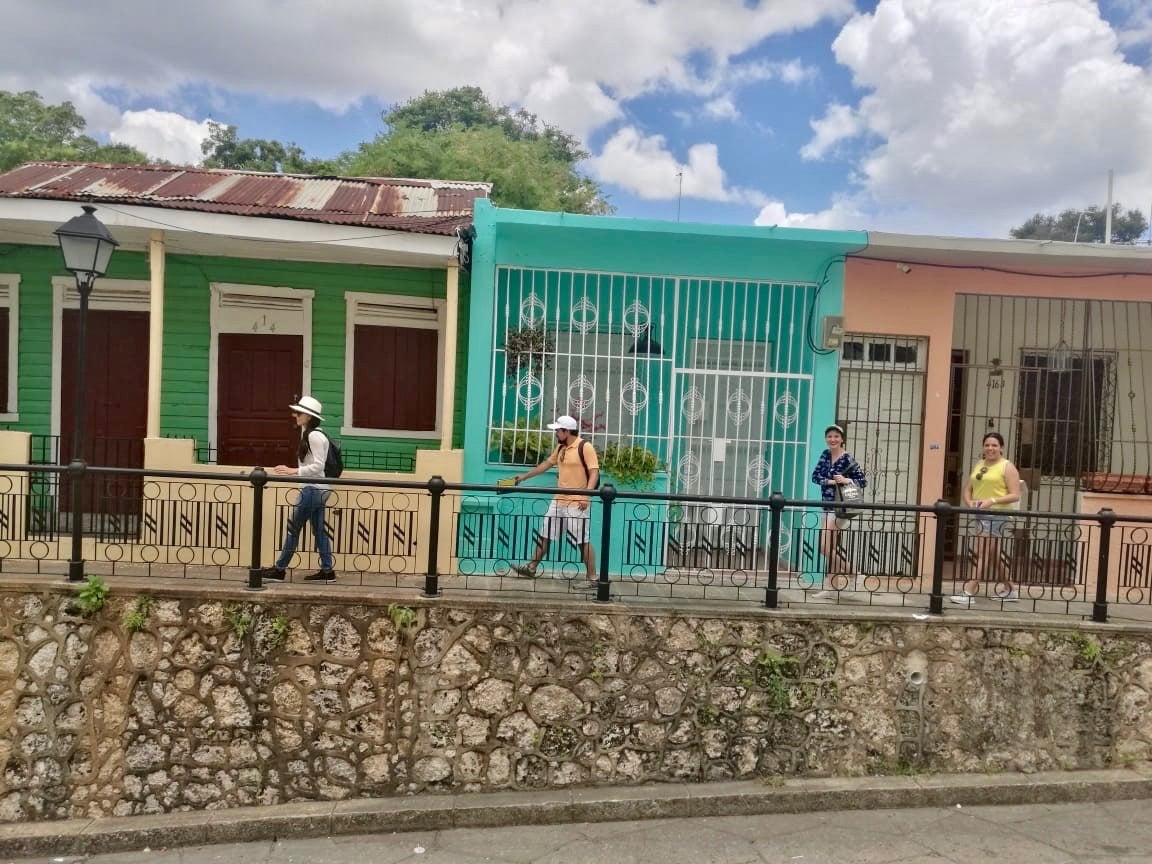The first time I visited Tres Ojos National Park I drove from Casa de Campo Resort & Villas, our hotel in La Romana. We were on route to go to JW Marriott Hotel Santo Domingo. They only have one street that connects both places so it is impossible to get lost. This park is five miles east of the capital of the Dominican Republic, therefore it is included in most tours.


When you arrive at the site you park your car and go to the entrance where you pay RD $200 for about $4. The schedule is from 8:30 a.m. at 5:30 p.m. everyday. Tres Ojos National Park has religious statues carved from wooden figures on the grass. It also has a kiosk that sells snacks and drinks, including Presidente beers. At the exit of the park you will pass through a corridor full of vendors offering local crafts.


A legacy of the Taínos
To go down to Los Tres Ojos National Park you must go down some stairs that take you to some water eyes below the surface. The Tainos, aborigines who lived on the island before the arrival of the Spaniards, called them eyes because of their oval shape. These caves were used by them as a refuge and for rituals.

When going down pay attention to the walls that are made of corals with fossils in them. This proves that the park, and the island, were submerged under the sea. The soils of the Dominican Republic are coralline. Therefore, the stairs were built with the same material, just like Santo Domingo, the oldest Spanish city in America.


Rediscovery of the Tres Ojos National Park
This place was ‘discovered’ by the Americans in 1916 during their intervention in the Dominican Republic. There are other versions but they are ‘road stories’ according to what our guide told us. Nowadays it is managed by the Ministry of the Environment, a governmental institution.


Tres Ojos National Park was a public swimming area for a long time until in 1972 when it became a national park and bathing was forbidden to preserve the place. People came down before by roots and ropes like Tarzan. Copey is a parasitic plant that hangs on the roof and its roots go down through the land and water. They hold enough weight, even from humans.


When I went the first time in 2015 they only allowed one person to swim there. His name is Rafael Bienvenido Cabrera Feliz and at that time he was 65 years old. They call him Tarzan because of his big mane. He grew up around the park. You can see him climbing the walls to jump to the different lakes encouraged by shouts, applause and tips from tourists.
Tres ojos
The water in Tres Ojos National Park comes from an underground freshwater river called Brujuelas, which means long river. This river rises in the Los Haitises National Park through the northeastern mountains, passing under the earth and ending at the Boca Chica beach. The constant flow in and out causes the waters to become vibrant shades of green and blue.

Originally there was only one lake below but there was an earthquake and the roof came off. This caused the lake to be divided into four.

One eye is called ‘Lake of Sulfur’ but it does not contain sulfur, if it had, it would smell very bad and there would be no life in it. Fish and turtles live in it. The name comes from the blue color and the spots in the background, which were previously thought to be sulfur. Bathers gave it that name. When the study was done it came out that it was calcium carbonate that is produced by the droplets of water that fall creating the stalagmites and stalactites. This lake measures 4 and a half meters deep and about 15 feet wide.

‘Lake of the Ladies’ is the least deep, at 2.5 meters. It was reserved for women and children when it was possible to bathe.


‘Lake La Nevera’ is the coldest with a temperature between 15 to 21 °C, since it does not receive sunlight. It has an area where you can touch the water.


And a lake
The last lake is ‘Zaramagullones’. To cross you must go on a barge pulled by a rope through ‘Lake La Nevera’. Without a doubt, it is the most beautiful. This lake is not an eye since it is outdoors. Its name comes from some ducks that lived in the area but are no longer found because they all ate them. It is 25 feet wide and about 7 meters deep. It is the deepest.
Photo of 2015

Photo of 2018

The water looks green because of the sun and the algae in the background. A small pier takes you to the clear part that is surrounded by ferns, which is the oldest plant on the planet. They grow quite large as they are in a swamp and they always have water. Some minerals such as calcium carbonate give them more nutrients.


On this site they filmed Jurassic Park I; the scene at the beginning of the film when they find the mosquito in the amber mine in Puerto Plata and then the ferns appear. To learn more about Dominican amber, you can visit Amber World Museum in Santo Domingo. They have also filmed other films such as Tarzan, Combat Shock and Gold and Dust at Tres Ojos National Park.





